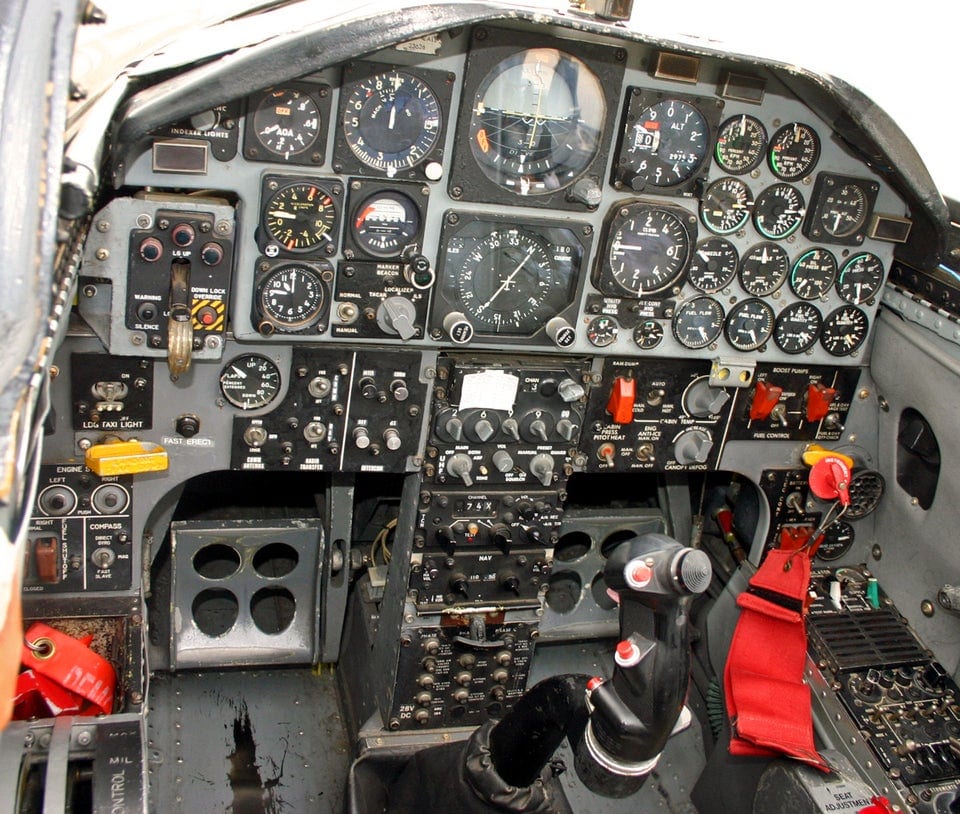
The Air Force T-38 program office said that the Attitude and Heading Reference System in the cockpit of the T-38A (pictured here) and the AT-38B needs replacing. Photo: Air Force
The Attitude and Heading Reference System (AHRS) for the 53 Air Force T-38A and eight AT-38B training jets needs replacing, according to the Air Force Life Cycle Management Center’s T-38 program office (AFLCMC/WLD) at Hill Air Force Base, Utah.
“The T-38A and AT-38B Attitude [and] Heading Reference System (AHRS) reliability has diminished to a point of concern,” a representative for AFLCMC/WLD wrote in an email to Avionics International. “Spare parts for repairs are difficult to procure and the system requires replacement.”
Yet, the Air Force has included no funding for AHRS replacement in its Fiscal 2021 budget request.
“The program has not been funded,” according to AFLCMC/WLD. “When it is funded, an [Request for Proposal] RfP will be issued.”
AHRS subsystems under consideration for replacement are the 1960s era displacement gyro by L3 Technologies and Honeywell; the attitude director indicator by Astronautics, MOOG and Joint Electronics; and the horizontal situation indicator by Astronautics and Joint Electronics.
In addition to the 53 T-38s and 8 AT-38Bs, which retain analog gauge cockpits, the Air Force has 442 T-38Cs, which have more modern “glass cockpits” from the late 1990s.
Northrop Grumman built the T-38 Talons, which entered service in 1960, and which are to be replaced by the Boeing-Saab T-7A Red Hawk. Air Force officials have said they expect the T-7A Red Hawk, named to honor the Tuskegee Airmen, to reach initial operating capability by 2024 and full operational capability by 2034. The Air Force said that it designed the T-38s for 7,000 hours of service life and that the aircraft are in their third service life, sustained by upgrades and service life extensions.
Like the T-38As and AT-38Bs, the T-38Cs also face Diminishing Manufacturing Sources Material Shortfalls (DSMS), caused by the stoppage of parts production.
Because of DSMS and termination of parts support from OEMs, the Air Force is moving to a T-38C mission display processor by Aitech; an Elbit America head-up display paired with a Leonardo upfront control panel; and a very high frequency communication radio by Cobham Aerospace Communications.
“Also, the T-38C is facing display system DMSMS issues,” according to AFLCMC/WLD. “The OEM [L3Harris] is moving to a more modern touch screen and large area displays vice the 1990s/2000s Video Graphics Arrays, Super Video Graphics Arrays and Active Liquid Crystal Matrix displays.”
L3Harris built the T-38C electronic engine display and multi-function displays.
“Due to component obsolescence and supportability issues the [T-38C] displays will not be supported beyond 2026,” AFLCMC/WLD said. “The Air Force intends to maintain current functionality to the greatest extent possible with electronic engine display and the multi-function display replacements, and there is no intention to integrate touch screens or large area displays as part of the replacement of those displays.”